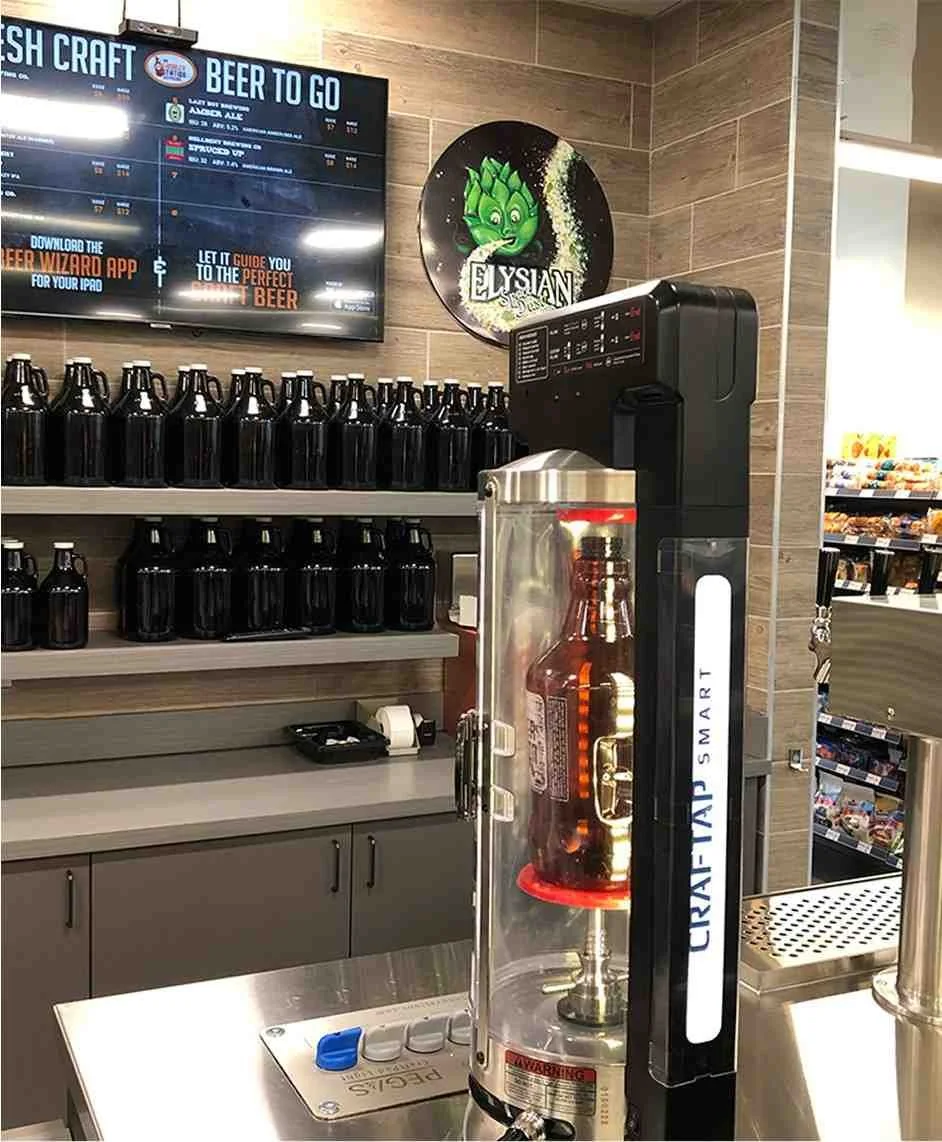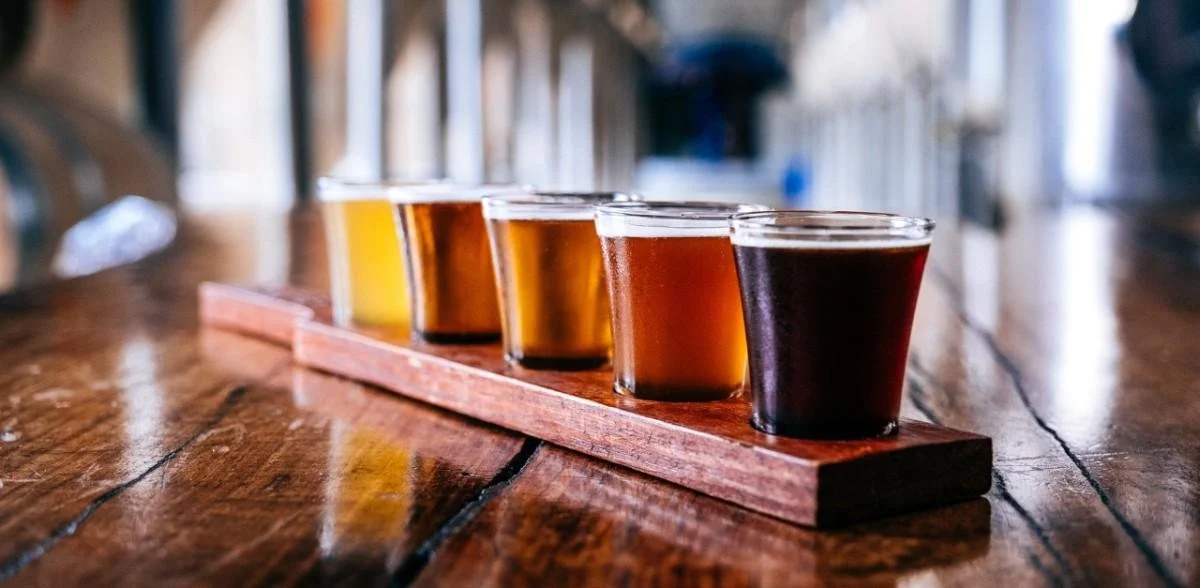How to Simplify Growler Operations
Growler operations have become an essential part of many breweries and taprooms, offering customers the chance to enjoy fresh draft beer at home while supporting their favorite local spots. Whether using glass, stainless steel, or other reusable containers, growlers provide both convenience for customers and an additional revenue stream for businesses.
However, managing growler operations can present several challenges. From ensuring beer freshness and preventing contamination to tracking inventory and handling the sales process, the steps involved can quickly become complicated. Without proper systems in place, businesses may struggle with wasted product, lost time, and inconsistent customer experiences.
GS Draft helps breweries and taprooms simplify growler operations with reliable tap system solutions that reduce waste, improve consistency, and streamline service. By focusing on clear processes, practical tools, and customer-friendly practices, businesses can boost efficiency while maximizing sales and satisfaction.
Beer Growlers
Beer growlers are containers designed to transport draft beer from breweries and taprooms to a customer’s home. They come in a variety of materials and sizes, but the most common are glass, stainless steel, and other reusable options. Glass growlers are popular for their affordability and transparency, while stainless steel growlers are valued for their durability and ability to maintain temperature. Some breweries also offer insulated or reusable growlers that appeal to eco-conscious customers.
Choosing the right growlers is essential for smooth operations. The type of growler a business uses affects not only customer satisfaction but also how staff handle filling, sealing, and storage. For example, glass growlers are easy to stock in large numbers, while stainless steel requires more upfront investment but can elevate the brand’s image. Considering how each option aligns with the business model can help simplify day-to-day operations.
Standardizing growler types can further improve efficiency. When a brewery or taproom limits the variety of growlers in circulation, staff can work faster and more consistently. Standardization also reduces confusion during the filling and sealing process. Some of the key benefits include:
- Easier staff training since processes remain the same.
- Faster filling times with fewer adjustments needed.
- Reduced storage and inventory issues.
- A more consistent customer experience.
GS Draft works with breweries and taprooms to implement efficient growler systems, including the right tap setups to complement standardized growler use. By carefully selecting and standardizing growlers, businesses can create a simpler, more efficient system that supports both staff and customers.

Filled Growler

Once a growler is filled, proper storage and labeling become critical to maintaining quality and ensuring smooth operations. Clear labeling with the beer name, fill date, and any required regulatory information helps both staff and customers keep track of freshness. Organized storage, whether in a cooler or display case, also makes it easier for employees to locate specific growlers and prevents mix-ups.
Maintaining freshness and quality should always be a priority. Beer is highly sensitive to light, temperature, and oxygen, so filled growlers need to be handled with care. Storing them in a refrigerated environment, ensuring caps or seals are secure, and filling them with minimal oxygen exposure can extend shelf life. Encouraging customers to consume their growlers within a recommended timeframe also helps protect the reputation of the beer being served.
Managing filled growler inventory efficiently ensures that operations run smoothly and waste is minimized. A simple tracking system allows breweries and taprooms to monitor what has been filled, what is ready for pickup, and what needs to be refilled. Key practices include:
- Using a digital or manual log to record filled growlers and pickup dates.
- Rotating stock to ensure the oldest growlers are sold first.
- Monitoring sales trends to avoid overfilling and wasting product.
With clear procedures for storage, labeling, freshness, and inventory tracking, breweries can simplify their filled growler operations while maintaining high standards of quality and customer satisfaction.
Growler Filling
Filling growlers efficiently requires a consistent process that protects beer quality while saving staff time. A clear step-by-step approach helps ensure safety, cleanliness, and customer satisfaction. Staff should begin by inspecting the growler to confirm it is clean and free from cracks or damage. The growler should then be rinsed with cold water or sanitized if needed, before being chilled to reduce foaming. Once ready, the growler can be filled directly from the tap or, preferably, through a counter-pressure filler to minimize oxygen exposure. After filling, the cap or seal should be tightened securely to preserve freshness.
The right equipment can make a significant difference in simplifying growler operations. While some smaller taprooms may rely on traditional taps, investing in counter-pressure fillers or growler-specific filling stations can greatly improve efficiency. These tools help maintain carbonation, reduce waste, and allow staff to fill multiple growlers in less time. Cleanliness is equally important, so having easy-to-use sanitizing equipment on hand streamlines preparation.
Minimizing waste and preventing contamination should be part of every growler-filling process. Foam overflow, oxygen exposure, and poor sanitation can all lead to lost product or compromised quality. To reduce these risks, breweries and taprooms can follow best practices such as:
Always pre-chilling growlers before filling to control foam.
Using food-safe sanitizers to keep equipment and containers clean.
Filling at an angle or with counter-pressure systems to reduce oxygen.
Training staff regularly on proper filling techniques.
By adopting consistent procedures, investing in reliable equipment, and prioritizing cleanliness, breweries can simplify their growler-filling process while delivering a high-quality product every time.
Selling Growlers
Selling growlers is not only about providing a container of beer but also about creating a seamless experience that keeps customers coming back. At the point of sale, staff should be trained to explain how growlers work, the best way to store them, and how soon the beer should be consumed for optimal freshness. Clear communication builds customer confidence and encourages repeat purchases. Offering signage or simple handouts with care instructions can also help educate customers without slowing down busy operations.
Tracking growler sales is essential for understanding customer demand and encouraging repeat use. A point-of-sale system that records growler purchases makes it easier to analyze sales trends, monitor inventory, and identify which beers are most popular for take-home options. Breweries can also build loyalty by incentivizing refills, offering discounts for customers who return with their growlers, or creating refill clubs that reward frequent buyers. These practices strengthen customer relationships while keeping operations organized.
Pricing strategies play a key role in simplifying growler sales while maximizing revenue. Setting a consistent pricing structure across sizes and styles helps staff avoid confusion and speeds up transactions. Some breweries separate container costs from the beer fill, while others bundle them together for simplicity. A few effective pricing approaches include:
Offering standard flat rates for fills regardless of beer style.
Separating growler purchase and refill pricing for clarity.
Creating refill discounts or promotions to encourage loyalty.
Using clear, visible pricing boards to reduce customer questions.
By focusing on customer education, streamlined sales tracking, and straightforward pricing, breweries can simplify their growler sales process while building long-term customer satisfaction and profitability.
Plastic Binding
Plastic binding is a simple but effective method for sealing and securing growlers after they are filled. It involves applying a tamper-evident plastic seal around the cap or closure, ensuring the container remains tightly shut until the customer is ready to open it. Many breweries and taprooms use this method to meet local regulations, maintain freshness, and give customers confidence that their growler has not been tampered with.
The use of plastic bindings provides several important benefits for both businesses and customers. They not only improve safety by keeping growlers sealed securely but also reduce the risk of spills during transport. In addition, the tamper-evident feature builds trust by showing customers that their growler has remained unopened since it left the taproom. Some of the key advantages include:
- Preventing leaks and spills while transporting growlers.
- Meeting regulatory requirements for tamper-evident packaging.
- Enhancing customer confidence with a professional finish.
- Protecting product quality by keeping caps tightly sealed.
In a busy taproom environment, efficiency is key. Applying plastic bindings should be a quick, streamlined process that does not slow down service. To achieve this, businesses can:
- Keep sealing tools and supplies organized near the filling station.
- Train staff to apply bindings quickly and consistently.
- Stock multiple sizes of plastic bindings to fit different growler types.
- Incorporate the sealing step as part of the standard filling process.
By making plastic binding a standard practice, breweries and taprooms can simplify operations, maintain compliance, and provide customers with a safer, more reliable growler experience.

Simplifying growler operations starts with standardizing processes, from choosing the right growlers and refining filling methods to proper storage, labeling, and sealing. Clear systems improve efficiency, reduce waste, and maintain product quality, while also making staff training easier and service faster. GS Draft provides the tap system solutions that support these standardized processes, helping breweries and taprooms keep operations consistent and profitable. By focusing on consistency and safety, businesses can save time, minimize errors, and provide customers with a reliable, satisfying growler experience that encourages repeat business.
Simplify Your Growler Operations with GS Draft, Your Trusted Expert for Beer Tap Systems
At GS Draft System Solutions, we help bars and breweries simplify growler operations with efficient, reliable tap systems. Our solutions are designed to reduce waste, improve consistency, and make service faster and easier for both staff and customers. With our expertise in self-serve technology, you can streamline operations while boosting profitability and customer satisfaction.
From setup to ongoing support, we are committed to providing high-quality, customized tap solutions that make growler operations easier, more efficient, and more profitable for your business.
Contact us today at (949) 421-3882 or email sales@gsdraft.com to learn how our tap system solutions can simplify your growler operations.
